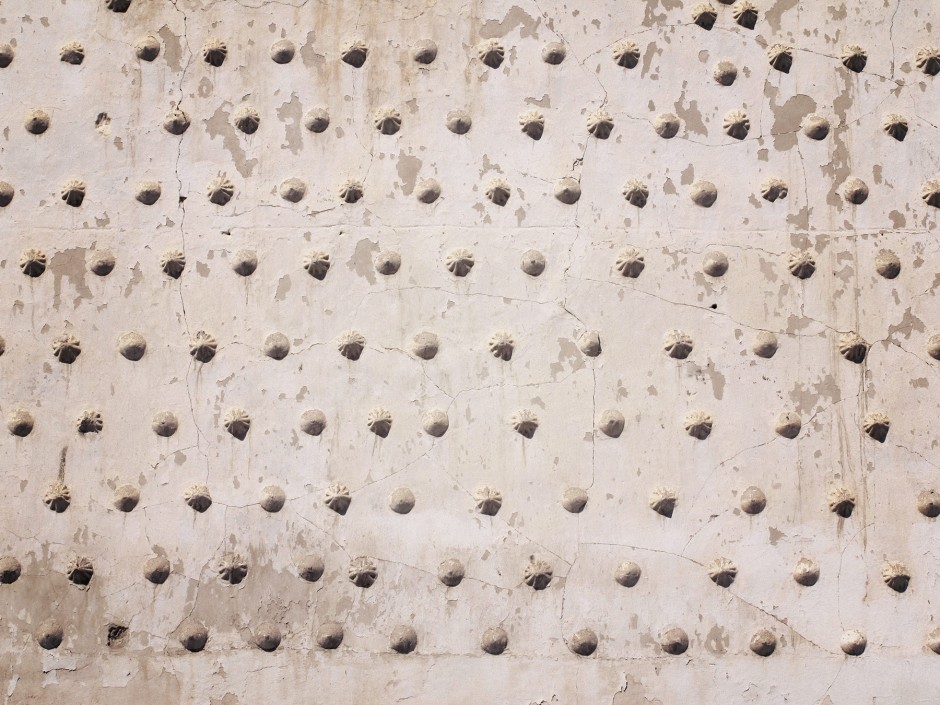The night sky above Cortijada Los Gázquez is an astonishing sight, a glowing canopy of stars all but filling its inky dome. Up in the high desert of the Parque Natural Sierra María-Los Vélez there is almost no light pollution – it is, as they say in the guidebooks, off the beaten track. This is Andalucía at its most traditionally rural, and often wild, where rocky, arid mountains rise up from the plains south of Murcia before tumbling down to the coast of the Cabo de Gata. Simon and Donna Beckmann, along with their twins, Sesame and Solomon, set up home here seven years ago, in a valley of pine forests and almond groves, bringing new life to an abandoned farm.
Today Los Gázquez – home, guesthouse and studio space – is both style piece and social experiment. An artist residency programme, Joya: arte + ecología, attracts established and emerging contemporary artists from around the world, while practicing artists and those with a simple creative urge come for the live-in workshops, such as ‘safaris’ out into the landscape in a brooding old Land Rover Defender, or illustration, food styling and photography in the farmhouse kitchen. Other guests come simply to enjoy the peace and extreme beauty of the remote setting and to explore the region. We get talking to Simon Beckmann about going off-grid, the beauty of vernacular design and the pleasures of everyday Spanish life.
When did you first get an inkling that Spain might become home?
Eating a cliff top packed lunch of fresh bread, ripe tomatoes, and garlic with a drop of olive oil, our legs dangled into a hazy blue sky. Beneath our feet flew vultures, big ones, so close you could hear the air passing through their flight feathers. This was 1995, high in the Sierra Grazalema. It was our honeymoon and we were in love, with each other and with Andalucía.
What was is about Andalucía in particular that spoke so strongly to you?
I loved the proximity to Africa, the cultural links between the two. I loved the dry landscape, so much the polar opposite to where I grew up, in the Peak District in the north of England, where it rains horizontally and continually. Here was space and semi-wildness. Here my creativity felt no confines.
I discovered Donna’s connection to Spain when I asked about your beautiful bench seat that repurposes a traditional painted headboard owned by her grandfather; can you tell us a little more of that family history?
The roots of Donna’s family grow deep into Spain’s past. Her great-grandmother, widowed, moved to Spain from Haiti in 1906. The eldest daughter, Coucoutte, met and married the Catalan racing driver Fernand de Vizcaya. Her sister Bella also married and lived in Barcelona (Bella went on to be a five times Spanish women’s tennis champion five) and the other sisters Mona, Donna’s grandmother, and Germaine came to live there too.
In 1930 Mona married Sir Norman King, the British Consul General in Barcelona from 1926 to 1938. Their daughter Norma, Donna’s mother, was born there in 1931. Norman remained in Barcelona during the Spanish Civil War, playing a careful diplomatic game in a city torn apart. In 1938 he and his family left Barcelona and took up his last post as Consul General in Marseilles.
For Donna, while growing up in Kent in England, this Spanish family history was palpable: in the food they ate, the languages they spoke and the furniture that surrounded them. Her grandfather was also a keen artist and their home was hung with his oil paintings of Spanish landscapes, some of which now hang in Los Gázquez.



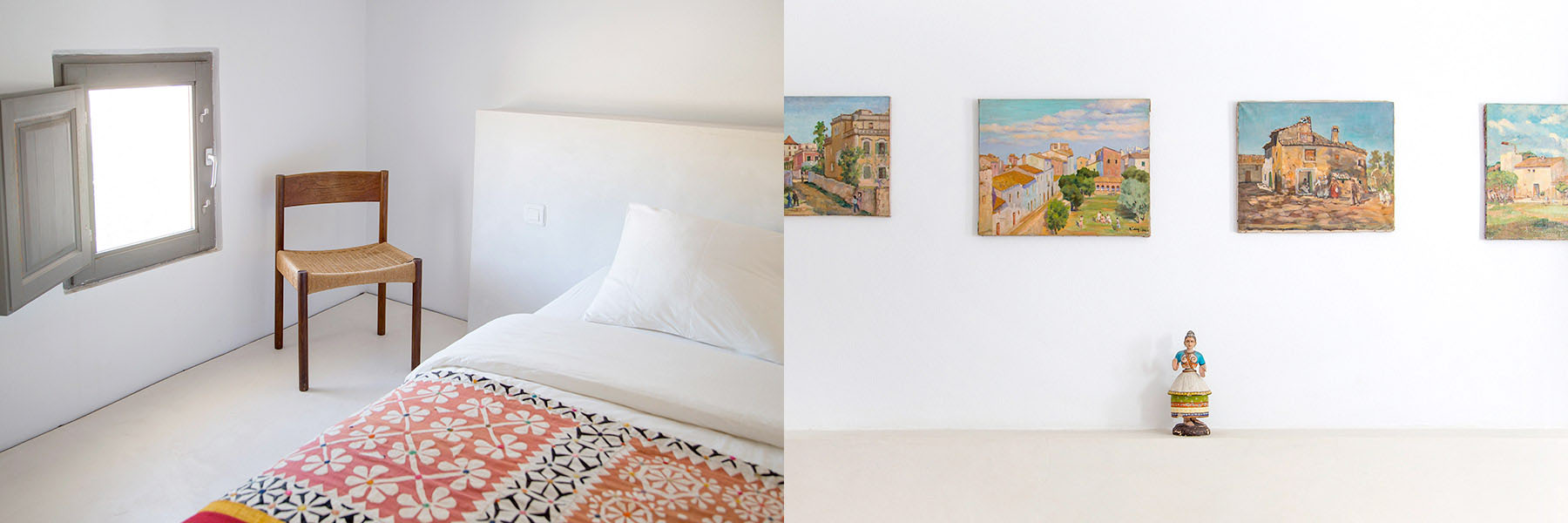


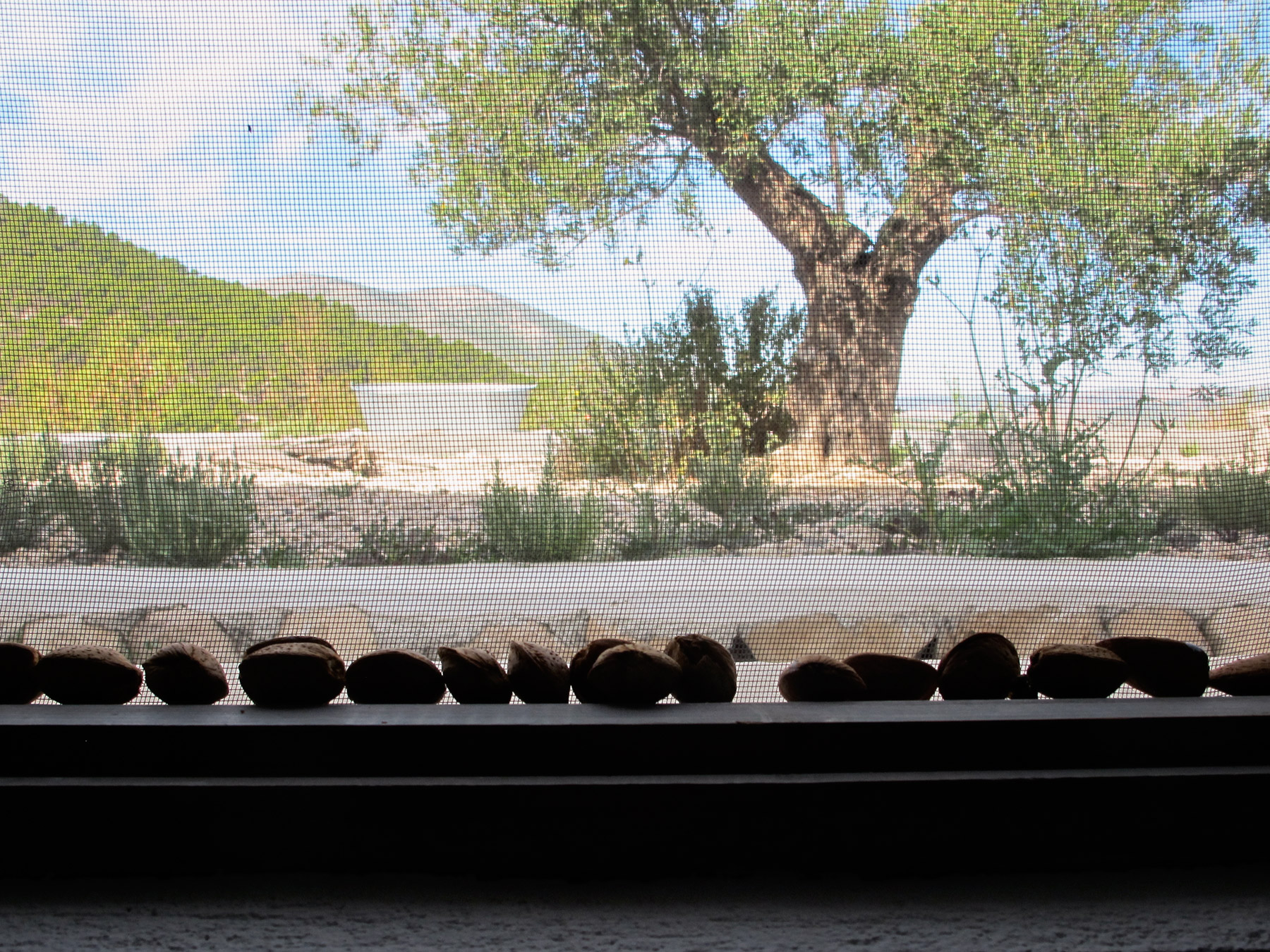
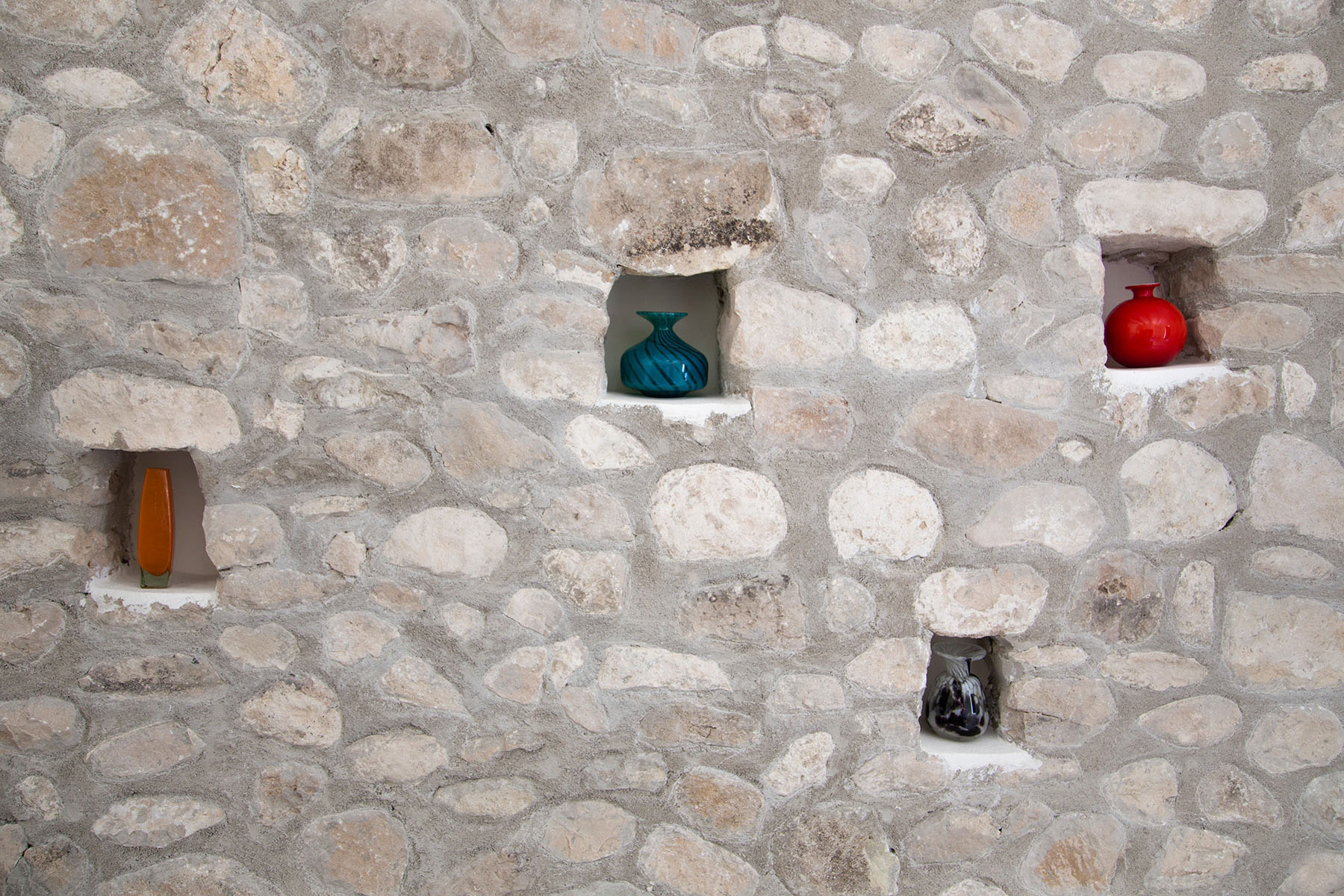


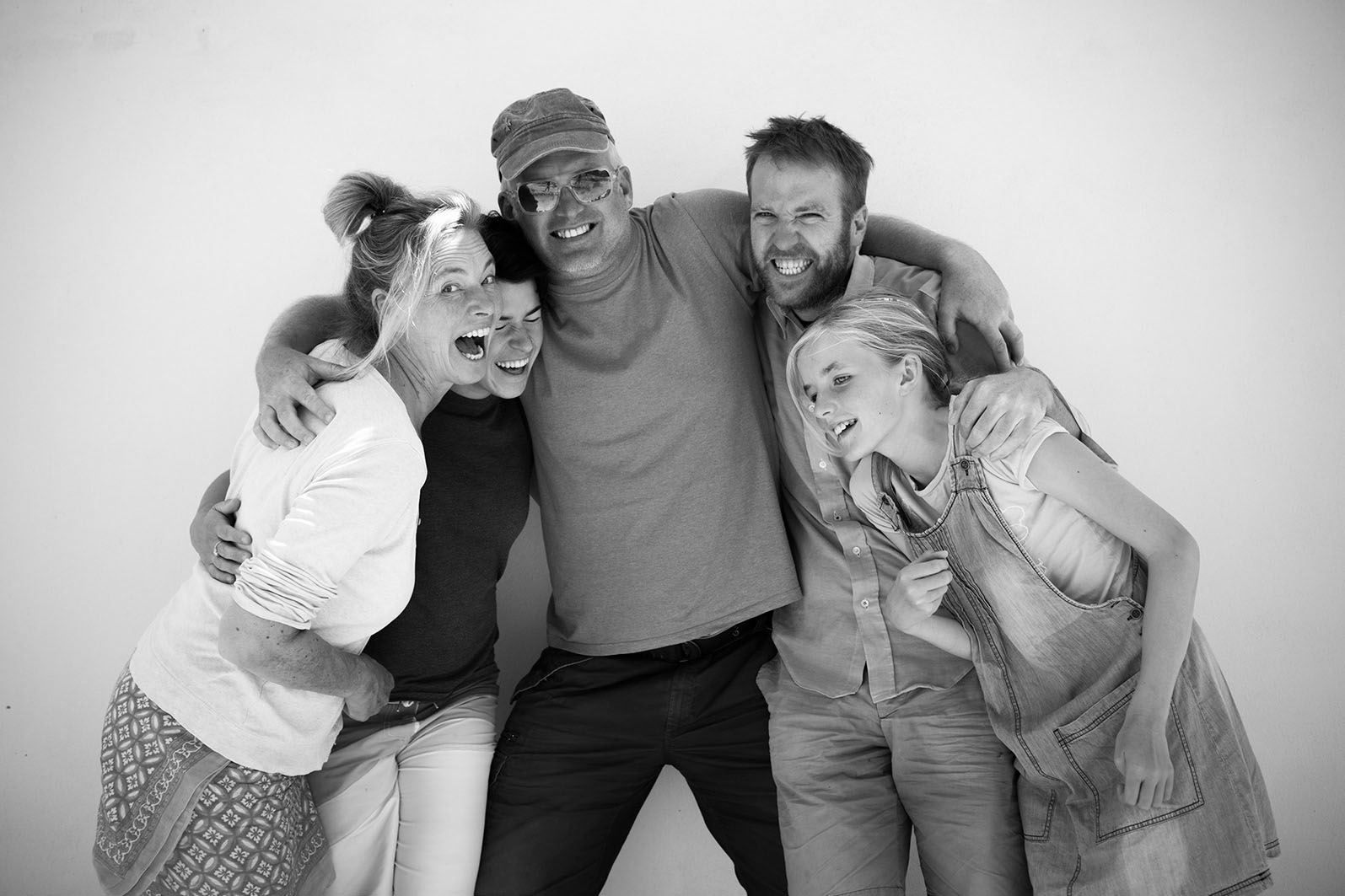
Do you also have European connections?
My family are a mixture of Anglo-Saxons, German industrialists and seafaring Scots, who were also all well travelled. I think the notion of free trade and movement across political boundaries in Europe existed long before the European Union was dreamed up. Both our family histories, whilst largely being English, are also ‘of another’. So it was easy for us to consider moving abroad and to bring up a family in another country. Our twins are perfectly bi-lingual. They think of themselves as English and they think of themselves as coming from Spain and they are very proud of this.
How did the idea of creating a simpler, sustainable, creative life evolve?
We are both contemporary artists and environmentalists and we wanted to build a project that mirrored our concerns. Art, architecture and the environment seemed to us to be the three essential ingredients. The Ghandi quote ‘you need to be the change you wish to see in the world’ reflected our feelings when, seven years ago, we chose Almería to make our home.
What made you realise Parque Natural Sierra María-Los Vélez was a place you could create this vision? How did it evolve once you found the site?
The Comarca de Los Vélez and the Parque Natural Sierra María-Los Vélez seemed to tick all the boxes. It’s stunningly beautiful, a stone’s throw from a beautiful unspoilt piece of Mediterranean coastline, the Cabo de Gata, and a short drive from a city of culture, Granada. When we found Cortijada Los Gázquez, we knew we had the foundation of a great project. The first step was the renovation, the off-grid power supply and ecological treatment of wastewater.
What was the design process like with a starting point of five ruined farm buildings?
We both have a keen eye and love of architectural design, especially from a heritage perspective. This is a fine vernacular building, the unconscious work of craftsmen based on agricultural and environmental knowledge accumulated over generations. Our ambition was to restore it into a ‘new vernacular building’, warm and comfortable, with clean lines and a minimal interior. So much residential architecture these days seems to have a homogenous notion of design that’s a consequence of the plurality of global political and cultural identity. As a result a lot of it fails to represent any local context, be it material or cultural. It seemed of the greatest importance to us that our renovation reflected regional identity and difference.
Can you tell us a little more about the vernacular architecture of this region?
Vernacular buildings, of course, are made from materials that come to hand. In our case, it’s light sedimentary limestone, clay, a limited amount of wood in the form of pine tree trunks, cane and woven esparto grass. Brilliant, but fragile beyond belief. Our starting point was to use as much knowledge of modern building techniques as possible, in terms of insulation and under floor heating. But it was crucial that we didn’t change any of the proportions of the building; we didn’t raise ceiling heights, we didn’t increase the amount or size of the windows, we didn’t increase the size of the rooms. We used the original roof tiles, re-laying them with the slightly unorthodox manner in which they were laid before.
The house is totally off-grid, but it’s still very comfortable, very modern…
What we did add was electricity, in the form of a photovoltaic array and a wind turbine. We added plumbing and bathrooms with hot running water created by a solar panel and two giant bio-mass boilers. We separated the capture of wastewater into grey water from showers, basins and the kitchen sink – now used to irrigate an olive grove and grow giant cane to be used as construction material. Black water is treated through a series of reed beds. Locally occurring Phragmites australis is a fantastic when it comes to consuming bacteria! This ecologically ‘cleaned’ water is used to irrigate a coppice of almond, and we crop that wood for bio-mass fuel.
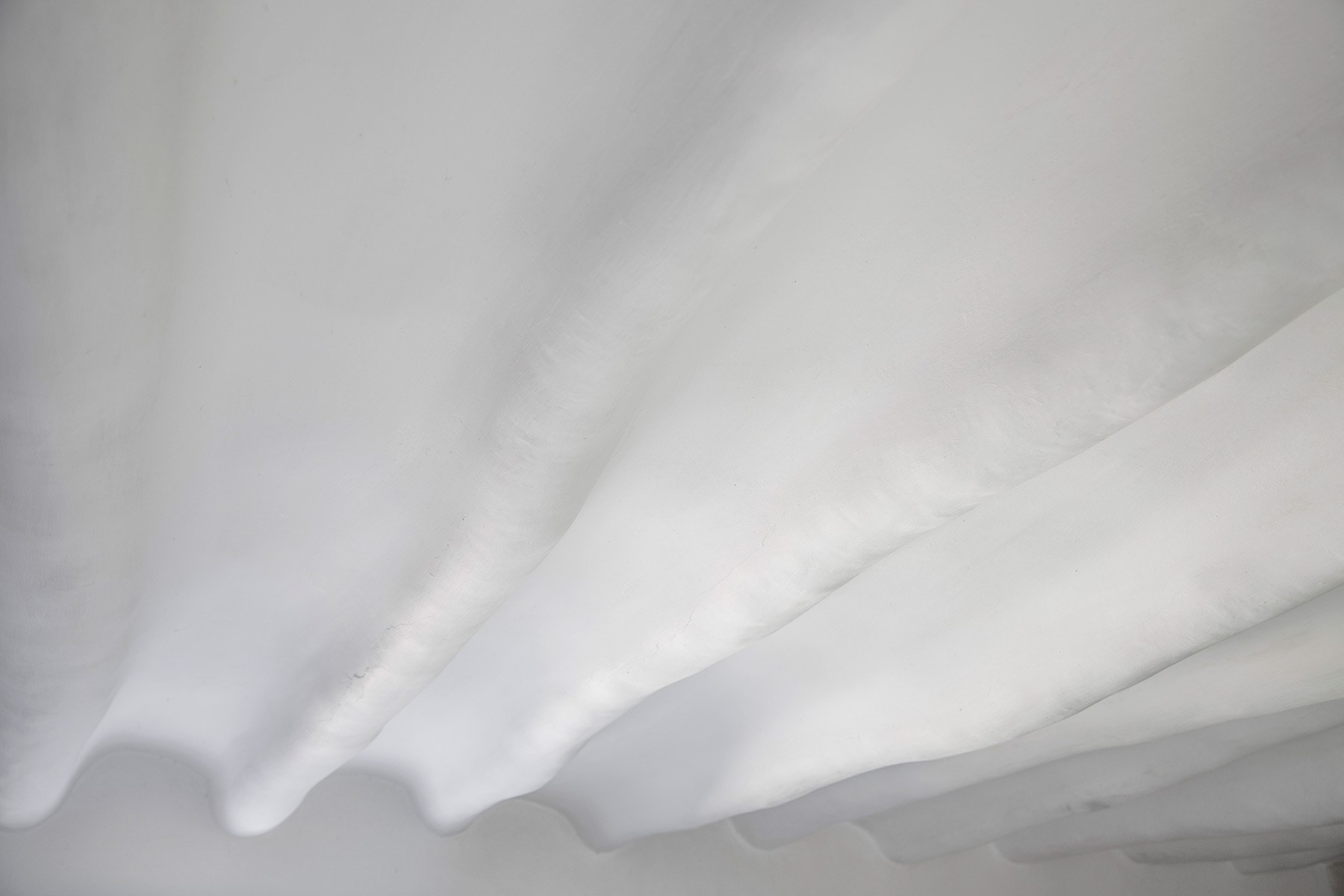
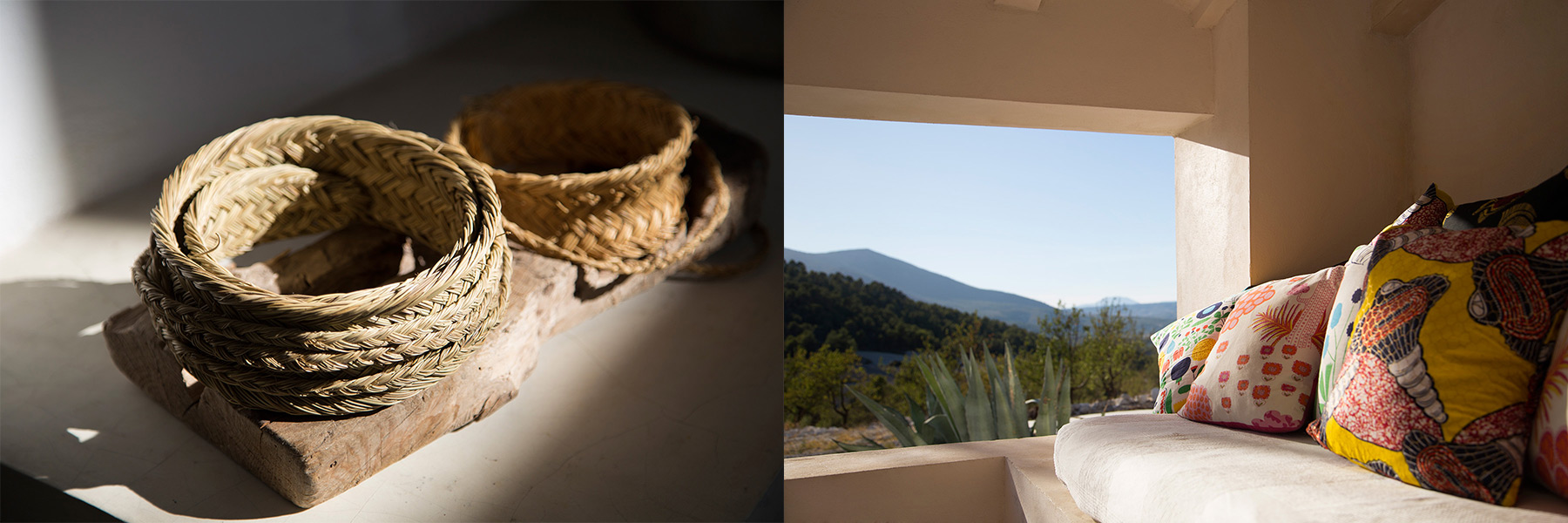




Can you explain a little about the Joya: arte + ecología programmes? Do these, along with the essential act of living as sustainably as possible, embody your environmental and social commitment?
I have always believed that art is not only a way to understand our times but also a way to influence them. From the earliest age I have been environmentally conscious. I became an artist believing that I could influence people politically through the cultural value of art. One of the reasons we chose to settle in an alpine desert in the north of Almería is because this is and will be the front line in the challenges Europe will meet in the face of climate change. Desertification, soil erosion and a battle for water will challenge our existence. These things will make farming increasingly unviable and the population will further decline. Without a vibrant human population, revenues will fall, cultural monuments, including landscapes, will suffer and 2000 years of cultural heritage will be lost.
Joya: arte + ecología seeks to bring global attention to the potential of rural Spain. Via our dual languages, we have the potential to bring international attention to the unique and contemporary cultural life that can exist here. Transdisciplinary projects we’ve undertaken, such as Sistemas Efímeros, which involved investigating the old water catchment system here that used to feed Los Gázquez’s well and food production and celebrated culture at its earliest and highest form, operate beyond conventional arts organisations and engage with other complimentary disciplines. As part of this project, in 2012, I was made a ‘fellow’ of the Royal Geographic Society in London.
So this is all part of engendering change by being the change?
Because Los Gázquez is off-grid, it’s virtually carbon free. For guests who come either to just stay with us, or for those doing workshops, a week staying in our home will offset the carbon emissions of a flight from northern Europe. Two weeks here and you are beyond offsetting; you are negating your carbon footprint.
Sitting around your big dinner table each night was, for me, as important a part of the experience as walking in the mountains or exploring Grenada; Donna’s cooking is an extraordinary blending of cosmopolitan sensibility, memory, traditional techniques and local ingredients…
We call it ‘cooking for the cultural nomad’ as you can travel to the origins of Donna’s food via the flavours. To use again a favourite word, you could call its style ‘vernacular’, the unconscious food of cooks based on knowledge accumulated over generations. We always ask ourselves ‘what can we take to the kitchen, what animals can we rear on this land, what vegetables can we grow, what flavours can we forage from the wild, what is in season and what can we preserve’?
What’s your favourite recipe? And favourite example of the fantastic local produce?
A favourite recipe is ajo blanco, a white gazpacho made from almonds and garlic, dressed with olive oil and decorated with halved white grapes. And produce: Julian the butcher’s artisan chorizo – halved lengthways and opened like a butterfly, dropped into the embers of an open fire, retrieved, add a squeeze of fresh lemon and….
What kind of wildlife can one expect to see on a brief wander around the valley?
Griffon vultures by the dozen. They rarely beat their wings as they preserve their energy by not burning calories. That’s why they are so big, just gliding on the thermals. Golden eagles, imperial eagles, Bonelli’s Eagles, short toed eagles (I just saw nine of these above the house, waiting to migrate south). Hoopoes and oriels the list goes on. If you are lucky, you can see ibex on the mountain top.
The cultural heritage in this region is incredibly rich too, isn’t it? What lies just beyond your doorstep?
Our village, Vélez Blanco, possesses a wonderful Renaissance castle perched, like so many castles in Spain, above the village like a sentinel imposing its authority on its subjects. The present castle is built on the ruins of the original Moorish fortification, it was destroyed in an earthquake in the tenth century. Within the castle walls lies a tragedy. The heart of our castle is missing, torn out. At the beginning of the twentieth century the aristocratic family that owned the castle was bankrupt. To make ends meet they sold the beautiful and ornately carved marble courtyard to a French dealer in European antiquities. He in turn sold it to an American millionaire collector who installed his fine piece of Renaissance Spain in his apartment on 5th Ave, New York. There for a long time he gazed past the marble carved plant forms and hybrid creatures, so redolent of first Roman and then Renaissance design, out into Central Park. With it’s heart in New York, the castle in our village fared badly, broken and in ruins. Eventually the American millionaire bequeathed his prize possession to the Metropolitan Museum of Art where it still resides.

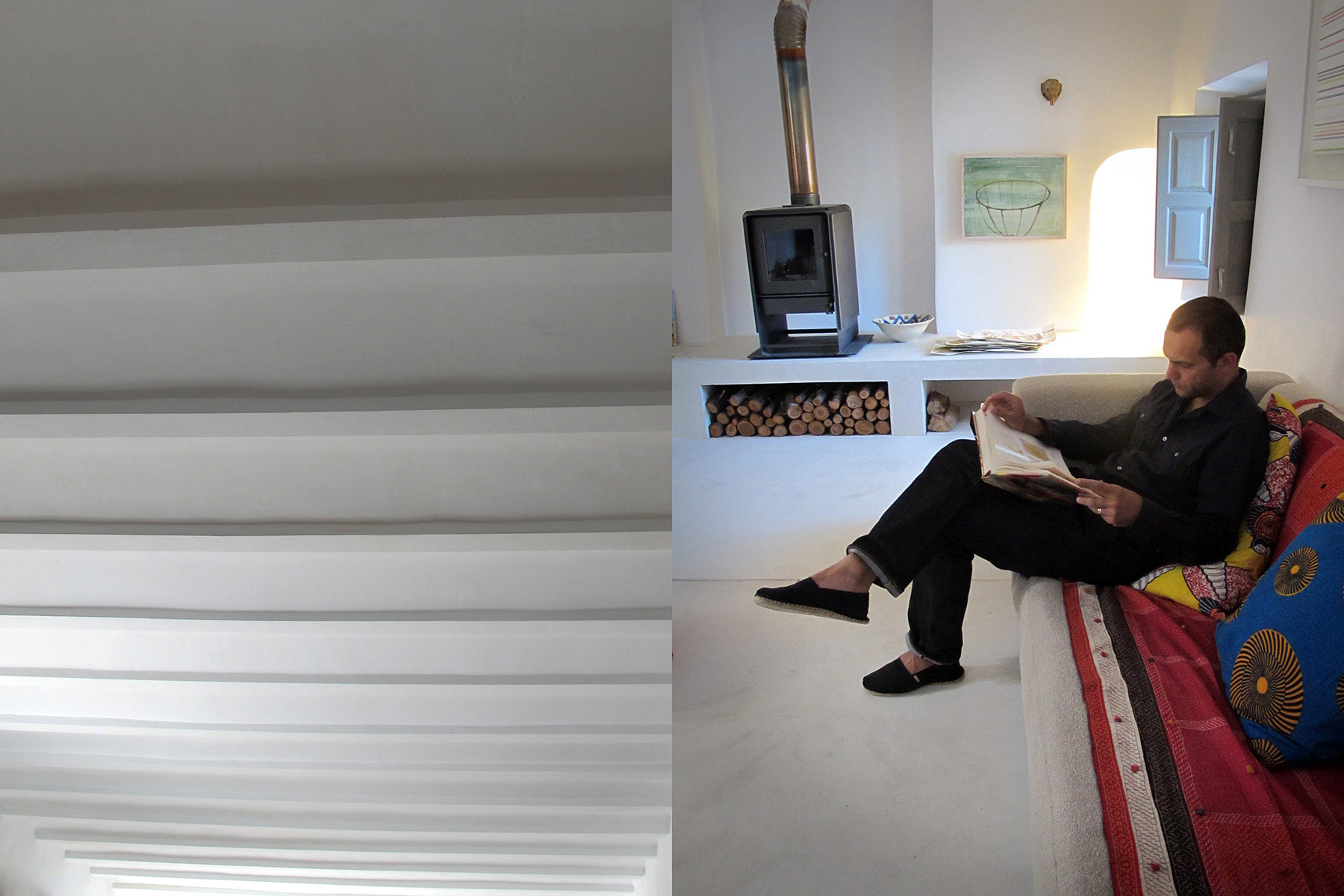


So what now for the gutted castle?
All is not lost for our castle. New life is being breathed into it: they have found the quarry where the original marble came from and made three-dimensional scans of the original design. This winter the courtyard will be rebuilt. It’s not the original, no, it’s a classical doppelganger, a prosthetic heart, but it will keep the castle alive for years to come.
We are also involved with this cultural rebirth. We have plans to bring contemporary culture from New York to the castle in Vélez Blanco, a reciprocal action from the New World back to the old.
The simplicity and integrity of the house’s design is a great backdrop for your wonderful collection of furniture and objects; can you tell us about a special piece?
Not so long ago José, who runs the village petrol station, asked if I wanted to buy his late mothers house. I already have a house but out of nosiness I went along as it is in the old Moorish quarter of the village.
The façade was very similar to other houses in ‘pueblos blancos’, but in this instance beneath a Renaissance/Moorish castle. The inside was a cave with mangers for the animals that would once have filed through the kitchen to reach their shelter. The front room was a clutter of disposessed posessions, statues of Mary, a crucifix, crockery of every style and print. Amongst this pile I spotted a large bowl that drew me immediately. ‘I can’t buy the house José but can I buy this bowl’? ‘Buy it!’, he exclaimed, ‘You can have it. It’s no good, it’s old. Here take it as a present’.
Armed with my ‘find’ I was delighted. I knew what the bowl was and I knew it possibly had no value to anyone in the area but me. It’s a style of pottery typical of Nijar, a village in our province but near the capital, Almería. I knew it was original because the colours were natural looking, not like the luminous fabrications of the same style they make today.
What about Nijar pottery is so noteworthy? What exactly makes it sing?
It’s turned on a wheel, you can see clearly. Its base ‘slip’ is cream but the part I like the most is the parallel deep blue and burgundy zigzag pattern around its inner rim. You can see how it is made. The potter rapidly painted the design, skillfully managing to ensure that each peak and trough of the zigzag was evenly spaced to meet perfectly at the end of the design. But then here comes the best bit. Now he relies on the ‘chance effect’ to complete it’s design. He turns the pot upside down allowing the coloured pattern to dribble downwards, or upwards in the finished article. Inside the pot you can see three points where the potter placed his bowl on a stand in the kiln to fire. Its upper edges have drips of transparent glaze like grubby pearls on a string.
It brings me back to this word vernacular again. The potters actions are innate, ‘this is the style of ceramics we have always made’. It’s not designed. Little consciousness was involved in its invention. The potter employed a knowledge of materials and their behaviour in the creation of an object that at once has a function but unwittingly expresses so much more.
A few months later we were in Almería and we went to the citadel, the Alcazaba where there is a small museum of Moorish artefacts. Within well lit glass cases were Moorish designed ceramics from the 7th–8th century and they all looked like my bowl. Artisans had transcended religious and political history through design.
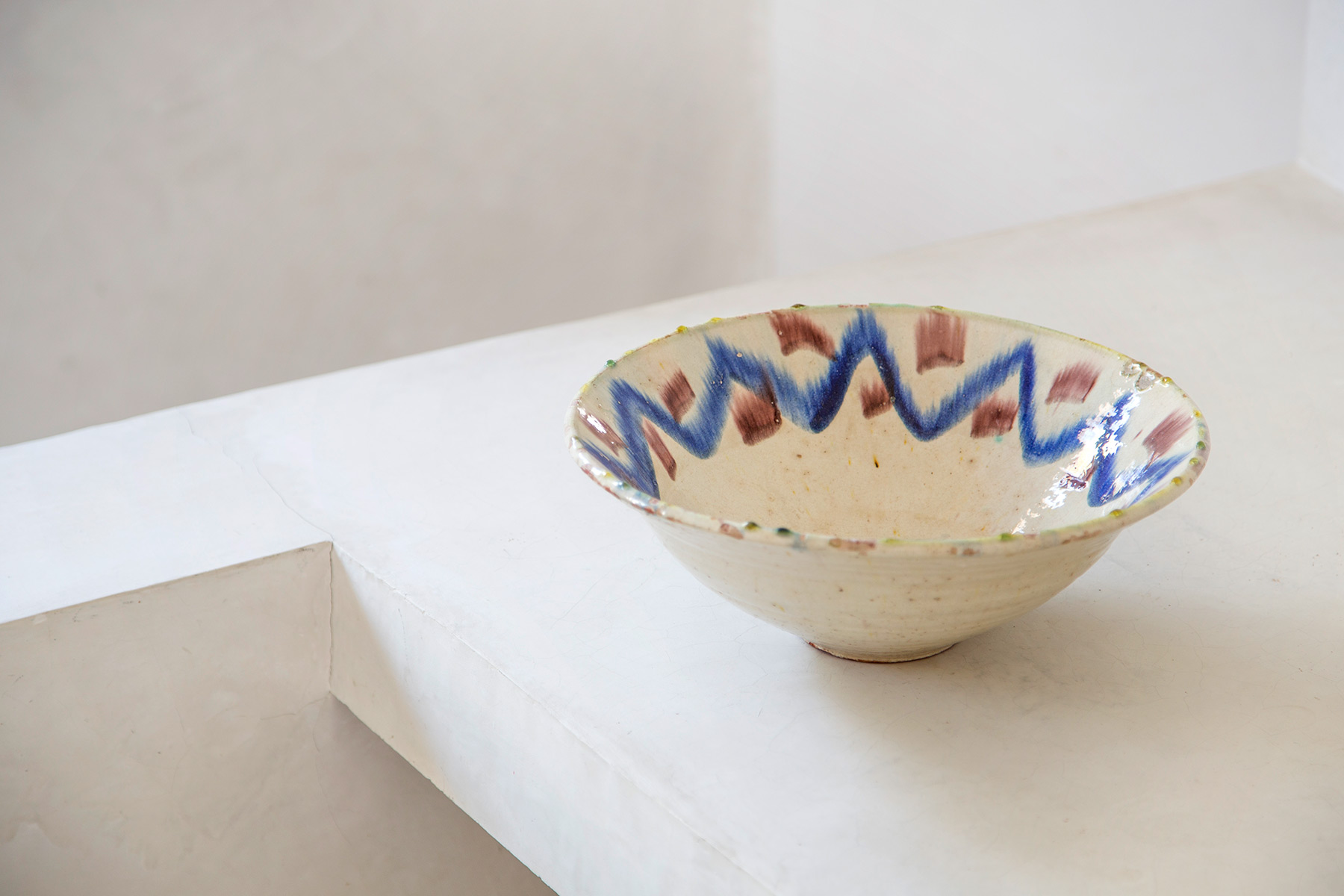
Thanks to Gonzaga Gómez-Cortázar for additional photography.
- Cortijada Los Gázquez
- Vélez Blanco 04830
- Almería, Spain
- www.losgazquez.com


